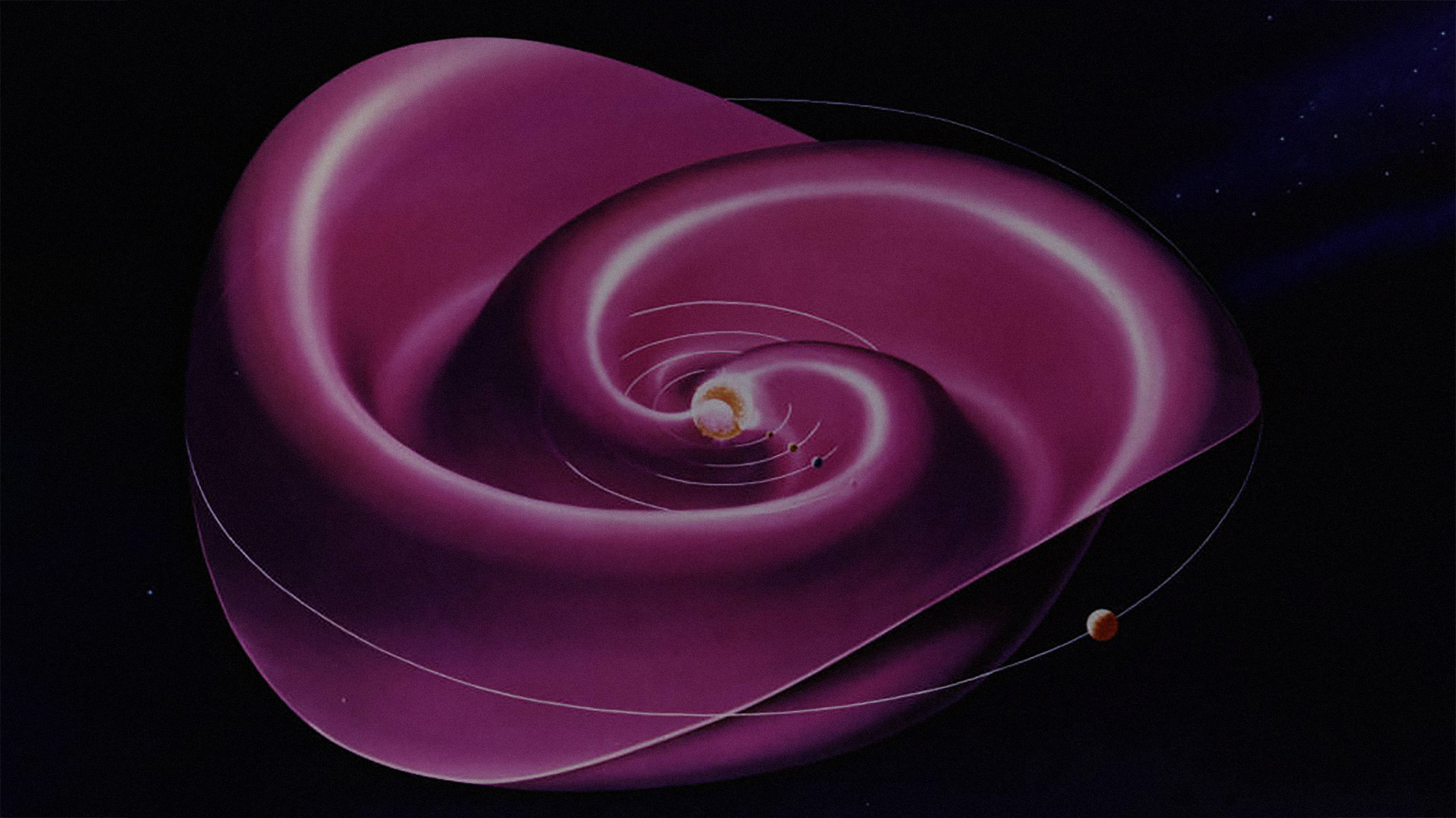The solar wind bubble that protects Earth has been mapped for the first time
More solar exploration missions are on the way.

In 2009, using NASA’s Interstellar Boundary Explorer, also known as IBEX, astronomers spied a strange ribbon-like structure dancing between our solar system and the rest of interstellar space.
The discovery of the IBEX Ribbon, which is invisible to both telescopes and the human eye, was one of scientists’ first forays into understanding more about our heliosphere—a bubble-like shield made up of solar winds.
A new study published in the Astrophysical Journal maps the entire boundary of this shield, and the data collected may be used to usher in a new era of heliophysics exploration.
“Most instruments that detect particles in space are detecting charged particles,” says Daniel Reisenfeld, a senior scientist at Los Alamos National Laboratory in New Mexico and lead author of the study. But IBEX is unique.
It detects energetic neutral atoms, or ENAs—ions that originally come off the sun but collide with interstellar electrons, neutralizing them. These atoms can be found everywhere in space, and observing ENA fluxes across time can be a powerful imaging tool.
So what exactly was that mysterious ribbon? Scientists have since determined that what they were seeing was a giant swath of ENAs lighting up the night sky.
Using data IBEX collected on ENAs as it charted just one 11-year solar cycle, the time between shifts in the sun’s magnetic field, researchers built a three-dimensional map of the entire heliosphere, which Reisenfeld says shields Earth and other planets from harmful radiation.
“Our Earth gets bombarded by cosmic rays, galactic cosmic rays all the time,” he says. These rays can subtly affect airplanes that fly near the poles, often on trips between Europe or Asia and the US.
Scientists say that to study other planet’s astrospheres, which is what heliospheres are called when they surround other stars, we must first understand our own.
“A lot of physical models which are being developed right now are based on the discoveries of the IBEX mission,” says Nikolai Pogorelov, a professor of space science at the University of Alabama in Huntsville. “It’s not only experimental,” he says, adding that it “will be used for [a] real purpose.”
Although Reisenfeld’s map isn’t an exact model of the heliosphere, it’s a jumping-off point for other solar-related missions. NASA’s Marshall Space Flight Center is now making plans for a Solar Cruiser, which it hopes to launch on the IMAP mission sometime in 2025.
Scientists have already mapped the view from a spacecraft orbiting around the sun, but along with predicting space weather, one of the cruiser’s goals will be to hover over the sun’s poles and enable three-dimensional mapping over the next decade, much as IBEX has done.
According to Roshanak Hakimzadeh, a program scientist for the heliophysics division at NASA, the project could help astronomers learn more about the sun’s rotation and about coronal mass ejections, or CMEs, powerful eruptions of plasma on the sun’s surface.
Whereas traditional spacecraft use combinations of liquid hydrogen and hydrogen gas, the cruiser will use solar sail technology and, once dropped off by IMAP, will propel itself along the stars using solar radiation pressure. At 1,700 square meters, it will be the largest cosmic sail ever flown.
“We’re heading toward making space exploration more feasible and economical,” says Rohan Sood, director of the University of Alabama’s Astrodynamics and Space Research Laboratory.
Along with Marshall, Sood’s team has been focused on trajectory designs for the cruiser, which is set to monitor the sun near the L1 Lagrange Point—a spot between the Earth and sun where their gravitational forces cancel each other out.
Whether or not future solar-related missions will give humans a greater understanding of the whole universe is still up for debate, but Sood says they could offer important clues to how the solar system continues to evolve.
Deep Dive
Space
How to safely watch and photograph the total solar eclipse
The solar eclipse this Monday, April 8, will be visible to millions. Here’s how to make the most of your experience.
How scientists are using quantum squeezing to push the limits of their sensors
Fuzziness may rule the quantum realm, but it can be manipulated to our advantage.
The race to fix space-weather forecasting before next big solar storm hits
Solar activity can knock satellites off track, raising the risk of collisions. Scientists are hoping improved atmospheric models will help.
Stay connected
Get the latest updates from
MIT Technology Review
Discover special offers, top stories, upcoming events, and more.